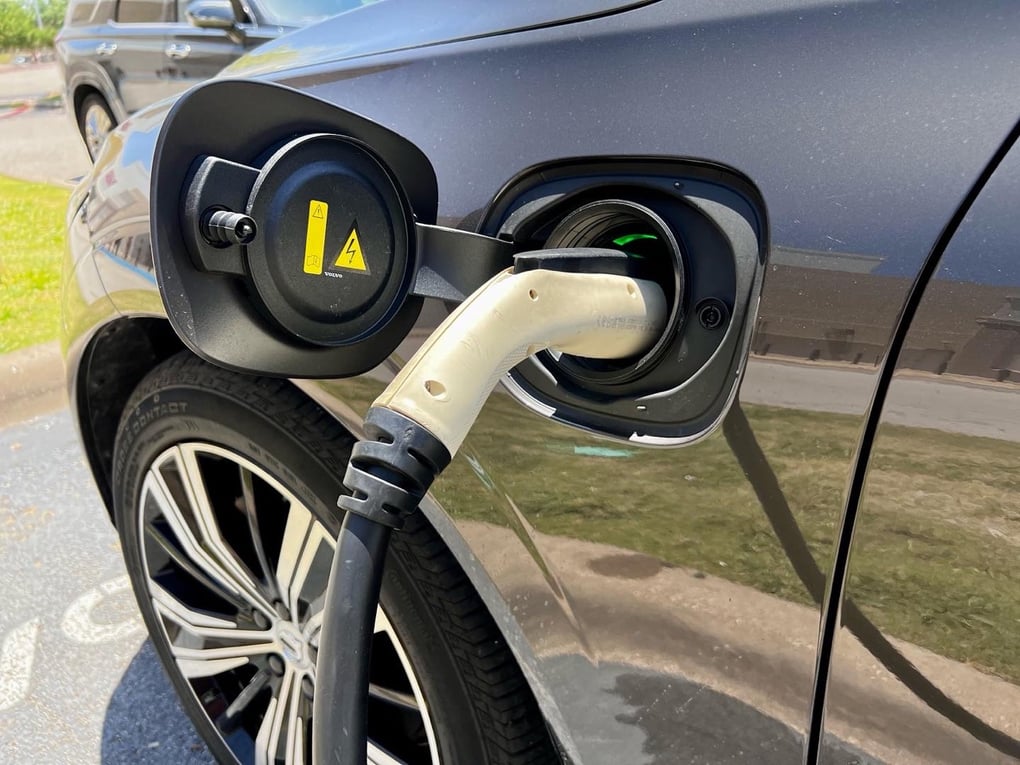If you thought you were seeing more electric vehicles on the road today - it's not your imagination. While not everyone is ready to ditch the gas station, the number of people making the switch from the gas pump to a charging station is growing. But as you'd imagine, it's happening faster in some states than it is in others.
According to iSeeCars.com, states like California and Massachusetts are mandating that all new vehicles sold in both states be electric by 2035. But it's not just state's taking action. Automakers are too. For example, Volkswagen and General Motors have both announced plans to stop selling internal-combustion-engine vehicles by 2035.
iSeeCars says that according to IHS Markit, electric vehicles accounted for 3.00 percent of all new car registrations in 2021, up from 1.8 percent in 2020. iSeeCars researchers expect that number to climb in 2022 due to two cited factors:
- Record gas prices. A recent AAA study backs that point up. It found that one-quarter of Americans said they would be likely to buy an all-electric vehicle for their next vehicle, with Millennials leading the charge (30%). Of those who plan to go electric, 77-percent cited the desire to save on fuel costs as a top reason for interest.
- Increasing Availability: The other factor propelling EVs is their increasing availability. More are being introduced into the market, including the 2023 Genesis GV60, reviewed recently by CarPro Show host Jerry Reynolds.
So with these various factors at play, which states are ahead of the curve when it comes to electric vehicle adoption? We turn to iSeeCars for a ranking of states by their share of electric cars. Here are some of the takeaways:
- California - the first state to announce a zero-emission vehicle mandate- has the highest share of EVs in the country.
- Four states really makeup the bulk (half) of EVs in the country: California, Texas, Florida and Arizona.
- Washington and Oregon have a disproportionately high share of used EVs on the road. Washington accounts for 1.6 percent of all used cars on the road, and accounts for 3.4 percent of the country’s used EV share. Oregon accounts for 1.5 percent of all used cars on the road and accounts for 2.7 percent of the country’s used EV share.
- North Dakota, Alaska, South Dakota, and Wyoming, all mountainous states, have the lowest share of EVs.
Ranking of States by EV Share - iSeeCars.com |
||
|
Rank |
State |
National Share of Used EVs |
|
1 |
California |
23.2% |
|
2 |
Texas |
13.9% |
|
3 |
Florida |
8.0% |
|
4 |
Arizona |
4.8% |
|
5 |
Georgia |
3.4% |
|
6 |
Washington |
3.4% |
|
7 |
Illinois |
3.0% |
|
8 |
New York |
3.0% |
|
9 |
New Jersey |
2.8% |
|
10 |
North Carolina |
2.8% |
|
11 |
Oregon |
2.7% |
|
12 |
Colorado |
2.5% |
|
13 |
Virginia |
2.3% |
|
14 |
Maryland |
2.2% |
|
15 |
Ohio |
2.1% |
|
16 |
Pennsylvania |
1.8% |
|
17 |
Utah |
1.7% |
|
18 |
Indiana |
1.4% |
|
19 |
Tennessee |
1.4% |
|
20 |
Nevada |
1.3% |
|
21 |
Massachusetts |
1.3% |
|
22 |
Minnesota |
1.1% |
|
23 |
Alabama |
0.9% |
|
24 |
Missouri |
0.9% |
|
25 |
Michigan |
0.9% |
|
26 |
Mississippi |
0.8% |
|
National Average |
0.9% |
|
|
27 |
Connecticut |
0.7% |
|
28 |
Wisconsin |
0.7% |
|
29 |
Arkansas |
0.5% |
|
30 |
Kentucky |
0.5% |
|
31 |
South Carolina |
0.5% |
|
32 |
Nebraska |
0.4% |
|
33 |
Hawaii |
0.4% |
|
34 |
Oklahoma |
0.4% |
|
35 |
Kansas |
0.3% |
|
36 |
Iowa |
0.3% |
|
37 |
New Hampshire |
0.3% |
|
38 |
Vermont |
0.2% |
|
39 |
Louisiana |
0.2% |
|
40 |
New Mexico |
0.2% |
|
41 |
Idaho |
0.2% |
|
42 |
Maine |
0.2% |
|
43 |
Delaware |
0.1% |
|
44 |
Rhode Island |
0.1% |
|
45 |
Montana |
0.1% |
|
46 |
West Virginia |
0.1% |
|
47 |
North Dakota |
0.0% |
|
48 |
Alaska |
0.0% |
|
49 |
South Dakota |
0.0% |
|
50 |
Wyoming |
0.0% |
iSeeCars currently lists 16 states taking California’s lead as a Zero Emission Vehicle (ZEV) state. This means they have regulations in place to achieve long-term emission reduction goals by requiring manufacturers to supply the cleanest cars possible. These states include California, Colorado, Connecticut, Delaware, Maine, Maryland, Massachusetts, Minnesota, Nevada, New Jersey, New York, Oregon, Rhode Island, Vermont, Virginia, and Washington. ZEV states generally have more electric vehicles than non-ZEV states since more EVs are generally available to consumers in ZEV states. However, more states are expected to adopt California’s emission standards to become ZEV states.
For more visit iSeeCars.com.

